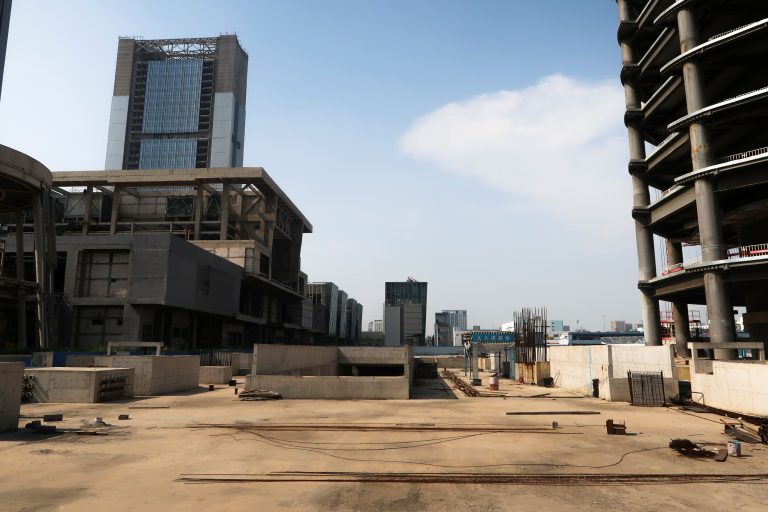Report
Housing Finance Sector Continues to Face Multiple Headwinds – India Ratings and Reseach (Fitch Group)


Mumbai-20 May 2019: Housing finance companies (HFCs) have slowed down their loan disbursements, which, in India Ratings and Research’s (Ind-Ra) opinion, can have a spillover impact on both retail home loan borrowers and property developers.
Multiple Challenges for HFCs Still in Play: The housing finance sector has been facing challenges, which have led to a contraction in spreads, a rise in funding cost and an increased spotlight on their asset-liability mismatches. Such mismatches have resulted in constrained financing from both market-based sources (CPs and NCDs) and banks for many players.
During FY17-1HFY19, to mitigate the margin risk, many HFC players expanded their non-housing books at a significantly higher rate than their pure housing loan books. The increase in the proportion of non-housing loan book could lead to asset quality pressure amid the current slowdown in disbursement to developers. Rising Funding Cost of HFCs Shifts Competitive Benefit to Banks: The systemic rise in market borrowings rate has affected the housing loan business. The borrowing cost for some large HFCs could be upwards of banks’ marginal cost of funds-based lending rate (MCLR). This has led to the shrinking of margins in mid-to-large ticket housing loans, where banks are highly competitive. Furthermore, the ongoing challenges in the real estate and small and medium enterprise segments (loan against property customers) may lead to HFCs reassessing loan growth plans, thereby putting pressure on their margins.
Accentuated Impact of Duration Mismatch: As risk aversion increases among lenders in the wake of rising concerns over asset quality and asset-liability tenor, funding access has been constricted. Many HFCs had increased short-term funding to reduce funding costs, supported by benign liquidity conditions. During tight liquidity conditions, the varied nature of lending and funding duration could lead to a mismatch in the asset-liability tenor. HFCs lend for a long duration but their funding duration remains three-four years, leading to asset-liability gaps. The management of such gaps could become even more challenging if funding includes a sizeable amount of short-term borrowings with low tenors (CPs); this can accentuate refinancing challenges. The mismatch has come to the fore after September 2018 as liquidity and market borrowing got tighter to mobilise, along with the reluctance of banks to increase exposure to the housing finance industry.In 3QFY19, housing loan growth moderated to 14.0% on a year-on-year basis and to 3.5% on a quarter-on-quarter basis. The segment has witnessed a moderation in growth from the historical CAGR of 19.0% for the last five years. Incrementally, risk perception has increased for low-rated HFC lenders, based on the duration of their asset book and funding profiles.
While assessing the liquidity strength of HFCs, Ind-Ra considers on-book liquidity, asset-liability tenor on a contractual basis, committed unutilised bank lines and granularity of assets (largely inflows). In Ind-Ra’s opinion, behavioral asset-liability management, which factors in prepayments, residual asset tenor and liability on a contractual basis, may create the optical illusion of matched asset-liability tenors, which is vulnerable during stress periods as prepayments may not flow and residual tenor would expand.
The current liquidity tightness in the housing finance industry has led to a large number of non-bank entities (both HFCs and NBFCs) curtailing loan disbursements, thereby creating a significant funding crunch in the sector. Tight funding in the housing finance industry has not only impacted fresh loan disbursement but also loans where disbursements are linked to construction, thereby impacting a large number of home buyers who could face challenges to service their commitments to property developers. Disbursement Slowdown to Lead to Dual Impact on Borrowers and Builders: Loan disbursement in the four quarters ended September 2018 averaged INR250 billion per month for large six HFCs players (based on the preceding four-quarter average). However, following September 2018, per month average disbursement fell to INR135 billion as few large HFCs faced serious challenges.
Moreover, funding to developers has been significantly tightened. If the tightening continues, there could be a material impact on construction progress, thereby putting asset quality pressure on HFCs in the medium term. Moreover, there could be a double whammy if HFCs have dual exposure to developers and home loan borrowers with common exposure to underlying projects.
-



 Interviews4 weeks ago
Interviews4 weeks agoHigh Rental Yield, Price Appreciation, Stable Growth, Make Sydney an Ideal Realty Investment Option: Haansal Estate
-



 News3 weeks ago
News3 weeks agoKW Delhi 6 Mall Onboards New Brands
-



 News3 weeks ago
News3 weeks agoManasum Senior Living Launches IKIGAI GOA, A Senior Living Community in North Goa, in collaboration with Prescon Homes
-



 News2 weeks ago
News2 weeks agoGodrej Properties Sells Rs 3k cr+ Homes of Godrej Zenith, Gurugram, within 3 days
-



 News3 weeks ago
News3 weeks agoBridging India Divide: Top 5 Tier- 2 Cities to Focus On
-



 News3 weeks ago
News3 weeks agoCommercial Realty Gets Tech Savvy: Fast Construction, Enhanced Convenience
-



 News3 weeks ago
News3 weeks agoMultipoint Connection – A Definite Boon
-



 News2 weeks ago
News2 weeks agoRBI’s Status Quo on Key Policy Rates to Help Maintain the Real Estate Growth Momentum, Say Industry Stalwarts























